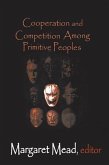Cultural anthropology is at a crossroads. Under the impact of postmodernist critiques, serious doubts have been raised about the scientific validity-indeed, the very viability-of the ethnographic enterprise. These doubts have been voiced most loudly in North America, where the field nonetheless still enjoys the broadest academic base, and attracts the largest number of practitioners. Over the last decade, a set of critical issues has increasingly engaged cultural anthropologists in heated debate. The first part of this volume includes a full-fledged discussion of these issues, offering suggestions for their constructive resolution. In spite of the disciplinary self-doubts engendered by postmodernism, the theory-building process in anthropology has not been abandoned. The second part of the volume presents a range of original theoretical statements by which American and Canadian anthropologists set the premises for disciplinary trends likely to shape anthropological practice for years to come. If, as it is prognosticated, the 21st century will see an explosion of interest in cultural anthropology, the models and ideas presented in this volume define the parameters of disciplinary expansion. North American cultural anthropology enters its second century on a wave of theoretical innovation and pragmatic translatability that may finally resolve the disciplinary contrast between analysis and application.








